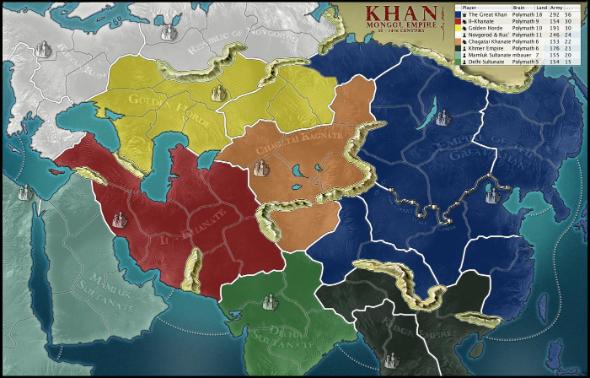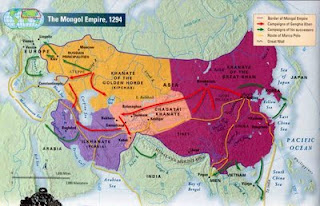Age of Empires - Mongols
Mongol invasion
In the 1200s a fierce nomadic warrior people swept out of Northern Asia, invaded China, and conquered it and much of the rest of Eurasia.
Genghis Khan, a brilliant general, led the Mongols in attacks on northern China and Central Asia.
By 1227, the Mongols had conquered Central Asia and parts of northern China.
Genghis Khan's sons and grandsons finished the conquest by taking much of Western Asia, Russia, and Eastern Europe.
By 1279, the Mongols controlled the largest empire in history.
The Mongol Empire
Lacking experience in formal government, the Mongols chose to use the Chinese style of government.
The huge Mongol empire was divided into four parts called khanates. The descendants of Genghis Khan ruled the separate parts.
Kublai Khan, Genghis's grandson, ruled that Khanate of the Great Khan, which included the Chinese lands.
To govern China Kublai Khan did not use Chinese scholar-officials. He appointed Mongols to high offices. He did not want Chinese officials to have power.
Kublai Khan rebuilt land and water routes to improve trade and travel.
China opens to the world
The Mongol emperors encourage trade in exchanges with the outside world.
During the rule of the Mongols, peace, security, and prosperity in the land became possible. The period was known as Pax Mongolica.
The Mongols protected trade on the Roads and encouraged sea trade. Trade goods, ideas, and inventions moved back and forth between the empire and other parts of the world.
Chinese ideas and inventions, such as the magnetic compass and paper money, reached Europe along with trade goods such as tea, silk, and porcelain.
Trade brought increased contact with foreign peoples and cultures. Diplomats, missionaries, and visitors share ideas with the Chinese.
Interactive Map Growth/Expansion of the Mongol Empire
Back to Age of Empires Notes & Handouts

